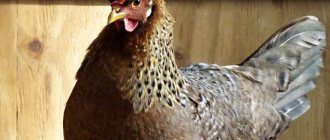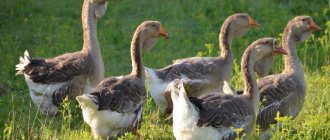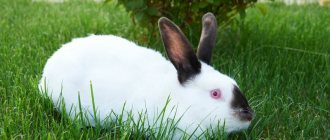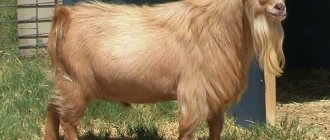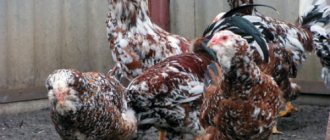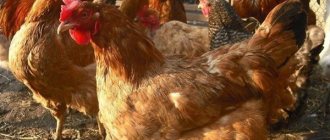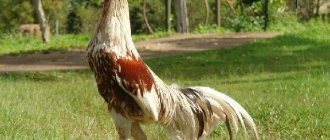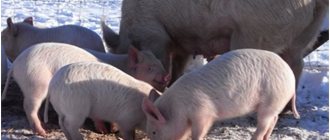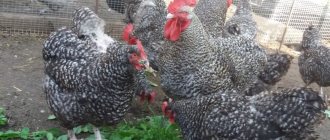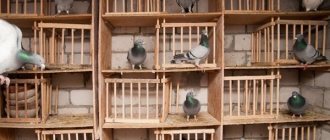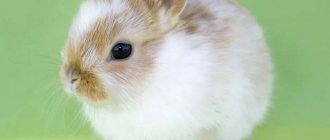Flanders rabbits are large, well-fed animals with long, massive ears. These giants are known all over the world and enjoy deserved popularity. However, caring for them requires special knowledge. Therefore, before you get a Flandre as a pet, be sure to study the characteristics of this breed.
Origin of the breed
The Flanders rabbit got its name from the area of the same name in Belgium. Therefore, the second name of the breed: Belgian giant. But breeders are still arguing about the origin of modern fledrs.
There are three most popular versions:
- Flanders are a descendant of the now extinct Flemish rabbits.
- The animals are descended from the Argentine Patagonian breed, brought by the Dutch in the 17th century.
- The Belgian giant was bred by crossing Flemish and Argentine breeds.
Breeders have the right to choose which version they prefer. However, it is reliably known that the first detailed description of the breed, as well as the formation of its standard, dates back to the second half of the 19th century. At this time, rabbits gained great popularity in England and were brought to the United States.
Now Flanders is in demand in countries where industrial rabbit breeding is carried out on a large scale. Breeders also did not ignore this breed. Most modern meat rabbits are bred based on or with characteristics similar to Belgian giants. Including the German motley rabbit and the popular gray giant and Soviet chinchilla breeds in the USSR.
Currently, purebred Flanders are most often kept as pets.
Price and reviews
The price of a Flanders rabbit is considered rather high. For a three-month-old rabbit you can pay from 800 to 1200 rubles. It is better to purchase animals from reliable breeders on proven rabbit farms. Then you will be confident in both the purity and good health of your pets.
Before purchasing, ask experienced owners about breeding features and look at reviews on the Internet. For example, on the review site you can read the following comments:
- Lipetsk resident Olga: “I started breeding the breed 3 years ago, before that it was unfamiliar to me. I bought rabbits and did not regret it. Unpretentious large breed. Minimum time spent. Females are good mothers. All the rabbits are alive...”
- Rostov-on-Don, Emil: “I became the happy owner of a dark gray Flanders rabbit. I didn’t even expect such a good character from the rabbit. Smart, obedient and big, just a dream..."
- Snezhnoye, Ukraine, Igor: “I’ve been trying to breed Flanders rabbits for about 3 years. There are a lot of rabbits, but they take a long time to mature. Large, repaired the cage more than once. They eat a lot. But otherwise, it’s a good and calm breed...”
Description of the Flanders rabbit breed
The appearance, like the origin, of the Flanders also causes controversy. Some people consider massive rabbits to be unattractive. Others are happy to have a clumsy giant at home along with cats or dogs. And for those who are engaged in industrial breeding, the appearance of rabbits is not the main thing. It is important that the animal meets the breed standard.
- Appearance. The Belgian giant is easy to distinguish from rabbits of other breeds. It has an elongated curved body with a wide deepened chest, a massive head with “swollen” cheeks, and long ears widened on the sides with a black stripe. Velvety paws are proportional to the body and are slightly darker than the overall color.
Flanders have dense, soft, glossy fur, up to 4 cm long. The breed standard includes seven primary colors: black, blue, fawn, light gray, sand, white, blue.
- Dimensions and weight.
Belgian rabbits are deservedly called giants; their size is actually impressive: Weight: females 7-9 kg, males 10-12 kg. Height: 65-75 cm. Chest circumference: 35-40 cm. Ear length: 15-25 cm, width about 20. With proper care, the lifespan of a Flanders is at least five years. - Characteristic. The character of these animals is also worth paying attention to. If other rabbits are wayward, then Flanders, on the contrary, are friendly, peace-loving, rarely show aggression and fight. The adult Belgian giant is highly intelligent. He gets along well with other animals.
Appearance
Flandres rabbits are distinguished not only by their large weight. Let's look at the main characteristics of Flanders rabbits:
- Large erect ears (17-19 cm), resembling the letter “V”. Placed on a rather large head and short neck.
- The body is long, wide and especially well developed in the lateral part.
- Rabbits have strong bones and large, strong hind legs and short front legs.
- The tail is quite long, pressed to the body.
- The fur is high (3-4 cm), shiny and dense.
- One-year-old animals reach a weight of 8-10 kg. The lowest acceptable weight is 6 kg.
- The eyes and claws are dark brown.
- Rabbits are 68-73 cm long, sometimes up to 80 cm (measured from the nose to the base of the tail).
This is the Flanders breed standard. Currently, there are several colors: black, opal, silver, blue, red, light gray and white.
Maintenance and care
As breeders note, rabbits of this breed require certain living conditions. Flandres love warmth, so with the onset of cold weather they need to be transferred to heated rooms. Otherwise the animals will die.
In summer, the cages can be taken outside. However, it is better to hide animals from sunlight under the roof. In winter, it is important to ensure that rabbits have plenty of straw. And also protect them from drafts, which can lead to frostbite in the ears. In this case, the room must be regularly ventilated and the animals must be provided with constant access to light. And always keep their place of residence clean.
Flanders cage
You need to choose a cage for a rabbit that is durable and spacious. Most breeders recommend the following sizes:
- for one adult - 110x70x50 cm;
- for a female with cubs - 180x110x50 cm.
During the summer, it is advisable to transfer the animal to an enclosure. It can be portable, made of rigid rods, or stationary, made of natural materials. It is better to place the enclosure in the shade, away from drafts. It is advisable to make one wall solid so that the rabbit can rest peacefully without worrying about the approach of strangers. Pet stores offer a large selection of suitable enclosures and cages.
Contents in the apartment
At home, Flanders do not need to be kept in a cage. A basket similar to a dog bed is suitable for a rabbit. Or a separately fenced space where he can walk freely. Moreover, it is better to cover the floor with a natural covering; an artificial one can cause skin problems for the animal.
In addition to arranging the place, when getting a rabbit you need to purchase:
- a bowl (large, with a heavy bottom so that the animal cannot turn it over);
- hay barn or nursery for grass;
- tray (you will need to clean it daily);
- drinking bowl (it is better to give preference to gravity models);
- trapik (it is needed to prevent diseases of the lower extremities in a rabbit);
- toys.
Tips for choosing a rabbit of this breed when purchasing
It is recommended to purchase rabbits of this breed from a farm or nursery. The breed can be distinguished by the shape of its head and ears. First of all, you should look at their parents. A female's first litter is rarely successful. But even older female rabbits can no longer produce high-quality offspring. The optimal age for the female is 2-3 years. When a giant is taken as a decorative one, it is better to choose it from a small number of offspring.
The best age to buy is 3-4 months. It is necessary to pay attention to the appearance of the baby rabbit. The eyes should be shiny, the nose and eyes clean. It would be a good idea to stroke the baby and make sure that the fur is clean, free of tangles and pleasant to the touch. The behavior must be quite active.
Feeding the Flanders
Rabbits are the type of animal that constantly chews something. Therefore, it is recommended to feed them three times a day:
- in the morning, succulent feed and half the daily amount of grain or feed;
- for lunch, hay or fresh greens;
- in the evening the remaining grain and silage.
Veterinarians remind that grass should not be the main food for rabbits. From there they only take useful vitamins. Despite the fact that the animal always has hay in its cage, the basis of their diet is crushed grain.
Helpful Tips:
- Feeding should be done at the same time.
- For better digestion, it is advisable to mix oats, barley, rye, corn or give preference to mixed feed.
- Fresh grass should be dried a little in the sun.
- You can pamper your pets with a mash of boiled vegetables (pumpkin, carrots, potatoes, beets).
- Raw vegetables are first washed and cut into large pieces.
- Do not forget to thread tree branches (not bone trees) through the bars of the cage, on which the animal will sharpen its teeth.
- Your pet should also always have access to fresh water.
- In the off-season, you can add vitamins to the Flanders diet or hang a salt stone in the cage.
Animals need to be fed depending on their age and health status. As for serving sizes. For a rabbit at rest, 150 grams of succulent food is needed in the summer, and 200 grams in the winter. For pregnant females, the norm increases to 250 - 300 g, and during lactation to 350 - 600 g. Also, the rabbit’s daily menu includes 150 - 180 grams of feed and up to 150 grams of hay, plus in the summer up to 800 grams of fresh grass. If an animal is raised for fattening, its diet is supplemented with bone meal.
Features of breeding Flanders with us
In our country, a large role is assigned to livestock farming. Rabbit breeding occupies a leading position. Flandre rabbits are bred for meat and skins. Animals are kept both on large farms and in private farmsteads. Farms that do not have the opportunity to build such huge cages give preference to other breeds, mainly cold-resistant ones.
In order to breed this type of rabbit, you must first know all the features of their breeding. Before breeding, it is better to consult a doctor, find out about all vaccinations and the health of the animal.
veterinarian - the answer will be sent to your email
Rabbit breeding
It is worth thinking about the reproduction of Belgian giants in advance and selecting large cages, and for the male and female separately. Before mating, their diet is also adjusted: minerals, vitamins and steamed grain (for males) are added.
At what age to cross
Male rabbits are ready for mating already at 4-5 months, while female rabbits are fully mature only at 8. It is not necessary to choose a specific time of year for mating. Females are ready to mate every 5-7 days in summer and every 8-10 days in winter. However, breeders do not recommend crossbreeding flushes in the fall, as the animals actively shed.
Readiness for mating can be easily determined by the behavior of the female. She becomes nervous, loses her appetite, and her genitals become inflamed. This means that she can be placed in a cage with a male. 3-4 days after mating, the rabbit is placed again. If she is already pregnant, she will not allow the male to approach her and will constantly run away.
How and how long does pregnancy last?
The fertilized rabbit is placed in a special cage with a nest already equipped. Now the female should not be irritated or nervous. It is necessary to ensure that the animal has enough food and drink. In the absence of water, she can eat newly born cubs.
Pregnancy in a Flanders rabbit lasts 30–35 days. The main factors influencing its duration are the number of litters and the age of the female. Young female rabbits bear offspring longer. Experienced people give birth faster.
Interestingly, some individuals may suffer from toxicosis. Therefore, increased attention is paid to caring for the female.
Productivity of Flanders rabbits
The average litter of Belgian giants has 6-8 cubs, but their number can reach up to 12. Babies are born small, weighing about 100 grams. But due to the fact that Flander females have a lot of milk, the rabbits grow quickly and get better. A month-old baby rabbit already weighs 700 grams, and the weight of a six-month-old individual already reaches 5.5 kg. On average, every month a young rabbit gains up to 55% of its weight.
Advantages and disadvantages
The Belgian breed of giant rabbits has its pros and cons. Advantages:
- high fertility and milk production of rabbits;
- resistance to diseases and temperature changes;
- unpretentiousness in feeding;
- physical endurance of rabbits;
- growing in the house as a pet;
- friendly, playful temperament;
- cultivation for skins and meat.
Cons of Flanders rabbits:
- Voracity. Rabbits eat constantly, so they require a lot of food. This is why Flanders grow quickly and gain weight.
- Low quality skins. Despite the high density of fur, fluff, which is valued much more highly, is almost absent. Moreover, the fur grows unevenly, its length varies throughout the body.
- Congenital anomalies. Giants often have deformation and underdevelopment of their limbs.
- Bloating. Young rabbits are susceptible to digestive tract disorders; adding medications to their food is a solution.
- Long-term adaptation. When Flanders rabbits move from one region to another, they often catch a cold. In particular, this applies to the transportation of animals from Europe or warm regions of Russia to cold regions.
- Long ripening. Meat rabbits mature 2 times faster than Flanders and become suitable for slaughter for meat.
Scientists and breeders are constantly working to improve the qualities of this breed, and the work is gradually producing positive results.
Advantages and disadvantages of the Flanders breed
Each breed has its own characteristics, and Flanders are no exception. Of the undoubted advantages that can be canceled:
- High viability of cubs;
- A large number of rabbits in the litter;
- Milk production of females;
- Easy care;
- Friendly character;
- Unpretentiousness to food.
The disadvantages of Flanders can be considered:
- Small meat yield (about 45% of net weight);
- Low quality fur;
- Voracity;
- The presence of congenital malformations (individuals with pathological development of the limbs are often found).
Disease resistance
Belgian giants are not in excellent health. They have:
- frostbite of the ears;
- joint diseases;
- heat strokes;
- skin problems (due to incorrectly selected floor coverings).
But rabbits tolerate infectious diseases much easier; the main thing is to vaccinate the animal on time.
Month-old rabbits must be given injections against myxomatosis, pasteurelliosis, and viral hemorrhoids.
Then the animals are vaccinated every year (preferably in the spring), with three different vaccines with an interval of 14 days.
